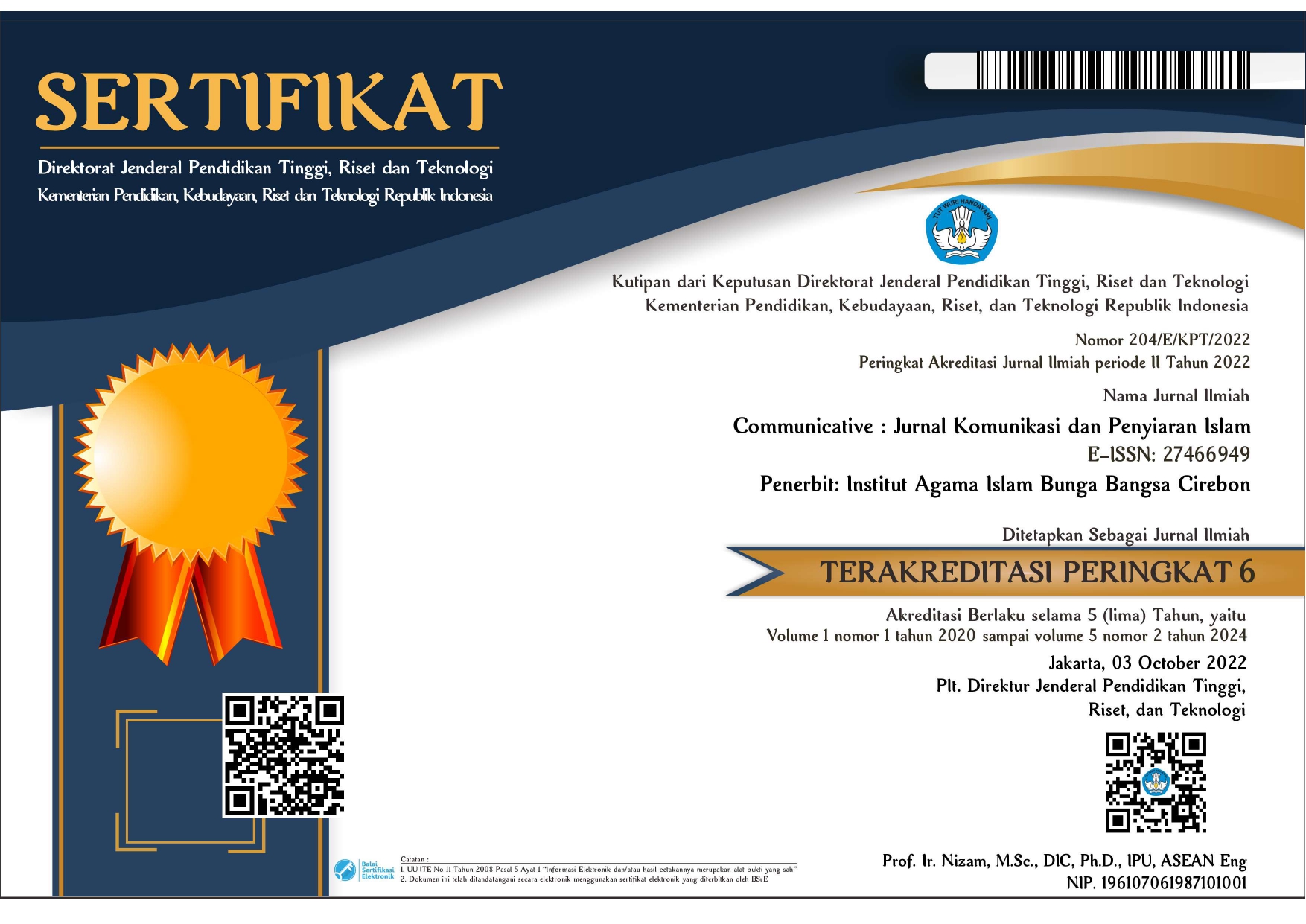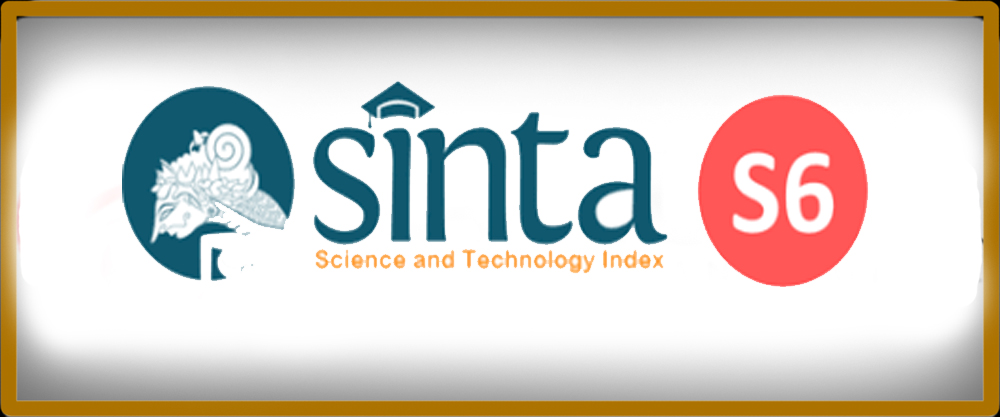EKSISTENSI DIKIE PANO SEBAGAI MEDIA DAKWAH DI KABUPATEN PASAMAN
Abstract
The spread of Islam in Indonesia carried out by missionaries is carried out through several methods, one of which is using voice communication media, namely the art of music. In the Minangkabau area, Islamic Sharia is the foundation and reference of the socio-cultural order so that it unites and forms local wisdom and one of the forms of cultural products that is influenced by Islam is the art of Dikie Pano in Pasaman Regency. West Sumatra Province it self also has an art similar to Dikie Pano which is spread to several other regions with different names such as Dikie Mundam Luhak Tanahdata, Dikia Rabano Ampek Angkek and Dikia Mauluik in Ulakan Pariaman. Dikie Pano in Pasaman Regency is still extremist to this day and the performances are always held at cultural rituals and celebrations of holidays in Pasaman Regency, for example the celebration of the Equatorial Culmination Point, and the Pasaman Birthday. In Dikie Pano's performance material , there are Islamic syiar values presented with chants and poems that contain sharia elements and are ringed with rhythmic melodies from the tambourine percussion instrument called Pano. This paper explains the Art of Music Dikie Pano as an effective means for da'wah whose research is carried out with an ethnographic approach and using descriptive analysis. Results In the study, Dikie Pano is a combination of Islamic, Minagkabau, and Arabic elements which has the main target of spreading Islamic religious teachings. It is said to be a da'wah medium because Dikie Pano in his performance uses percussion instruments in the form of tambourine and singing using lyrics in the form of prayers taken from the Qur'an and verses in the Book of Barzanji by the Arabic writer Al Barzanji, so that through the performance it is effective as a means of conveying the teachings of Islam.
Downloads
References
Creswell, J. W. (2015). Penelitian kualitatif & desain riset: Memilih di antara lima pendekatan (Terjemahan Pustaka Pelajar). Yogyakarta: Pustaka Pelajar.
Ediwar, S. S. M. H., Minawati, R., Yulika, F., & Hanefi, H. (2018). Musik tradisional Minangkabau. Gre Publishing. Retrieved from https://books.google.co.id/books?id=VrxsDwAAQBAJ
Ediwar, dkk. (2010). Kesenian bernuansa Islam Suku Melayu. Jurnal Seni dan Budaya Melayu, 5, 227–249.
Ediwar, dkk. (2016). Bentuk akulturasi estetika Islami dan musik populer dalam masyarakat Minangkabau. Jurnal Kebudayaan dan Kesenian Minang.
Ediwar. (2016). Rekonstruksi dan revitalisasi kesenian Rapa’i Aceh pasca tsunami. Jurnal Seni Tradisi Nusantara.
Fajriah, R., & Wimbrayardi, W. (2020). Fungsi kesenian Kompangan dalam pesta perkawinan masyarakat Kampung Baru, Kelurahan Bajubang, Kabupaten Batanghari, Provinsi Jambi. Jurnal Sendratasik, 9(3), 28–36.
Koentjaraningrat. (1990). Pengantar ilmu antropologi. Jakarta: Rineka Cipta.
Leisya, R. M., & Wimbrayardi, W. (2020). Bentuk penyajian kesenian ritual Balota Palapah Melayu. Jurnal Kebudayaan Nusantara.
Mah Yully Putri, R. Y. (2022). Penyajian Dikie Rabano dalam acara perkawinan. Jurnal Musik Etnik Nusantara. Retrieved from https://journal.isi-padangpanjang.ac.id/index.php/
Minangkabau di Sanggar Sumarak Anjuang di Kota Medan. (n.d.). E-Jurnal LWSA, 2(3). Medan: Talenta.
Pacik di Kecamatan Koto XI Tarusan Kabupaten Pesisir Selatan. (n.d.). Jurnal Sendratasik, 4(1), 77–88.
Pertunjukan Salawaik Dulang Group Arjuna Minang. (n.d.). Ekspresi Seni: Jurnal Pengkajian dan Penciptaan Seni, 3(2). Padangpanjang: Institut Seni Indonesia.
Pisang di Nagari Bukit Bais Kecamatan IX Koto Sungai Lasi Kabupaten Solok. (n.d.). Jurnal Sendratasik, 10(1), 392–401.
Resital: Jurnal Seni Pertunjukan. (n.d.). Vol. 17, No. 1, 30–45. Yogyakarta: Institut Seni Indonesia.
Sentosa, F., & Wimbrayardi, W. (2023). Perkembangan kesenian Dikie Rabano kelompok Masjid Nurul Huda di Nagari Koto Lamo, Kecamatan Kapur IX. Jurnal Kebudayaan Islam Nusantara.
Soedarso. (1991). Sistem membaca cepat dan efektif. Jakarta: Gramedia Pustaka.
Wuri, J. M., Wimbrayardi, W., & Marzam, M. (2015). Upaya pelestarian musik Talempong. Jurnal Seni Tradisional Indonesia.

This work is licensed under a Creative Commons Attribution 4.0 International License.














